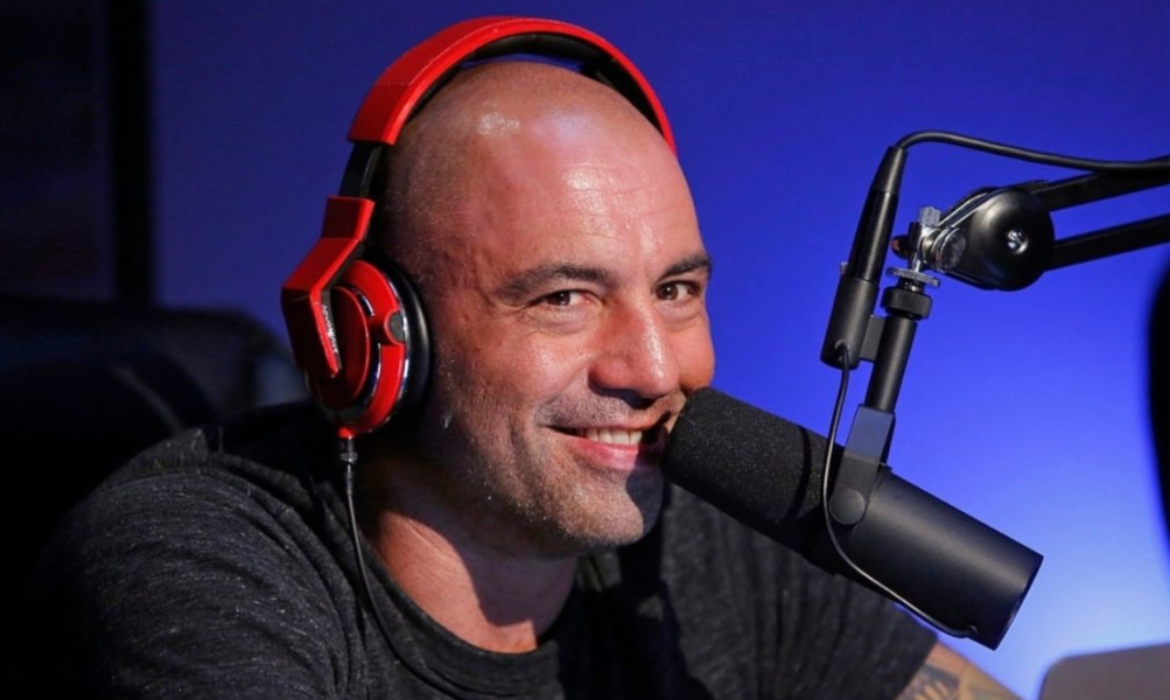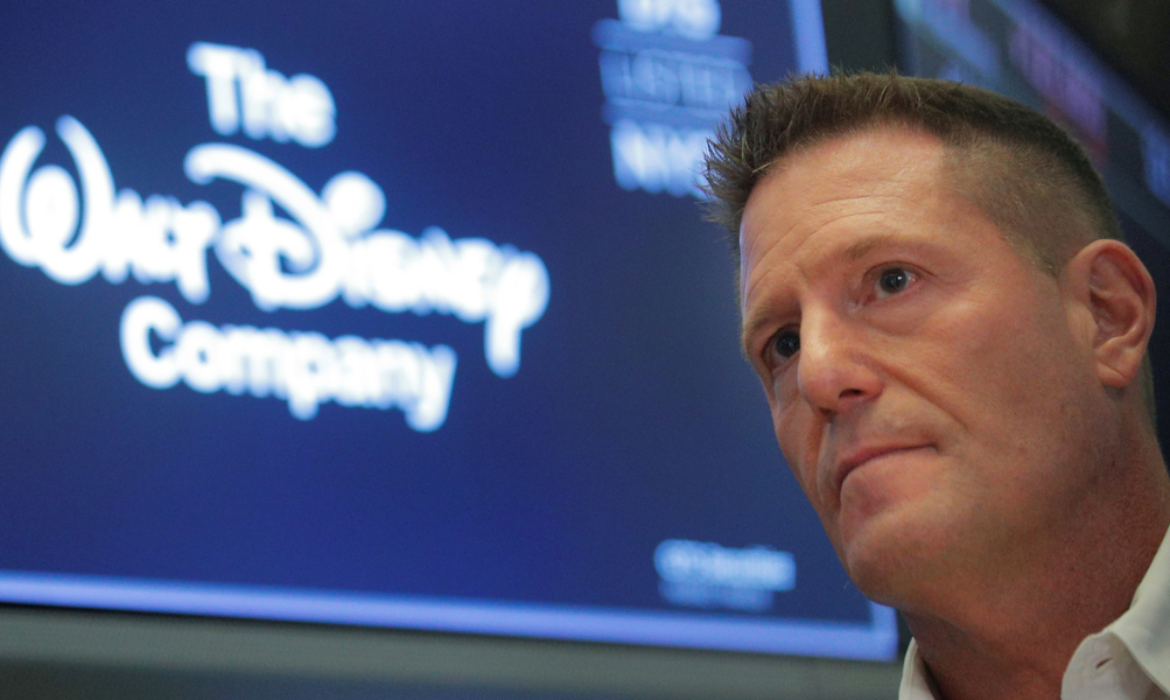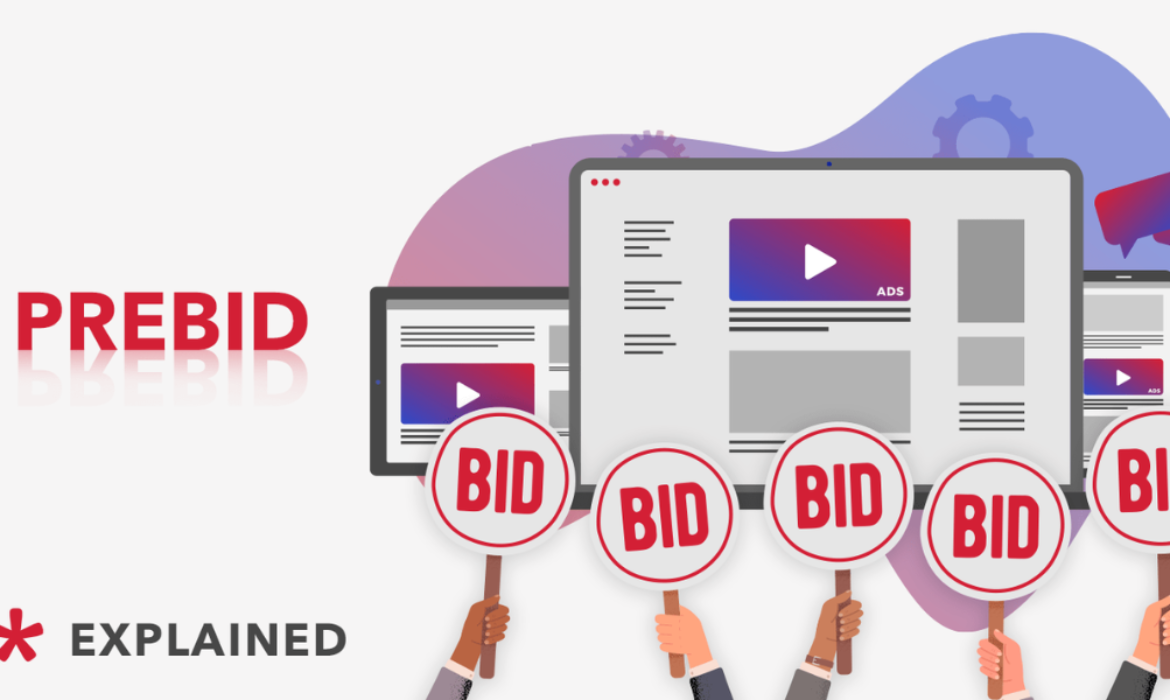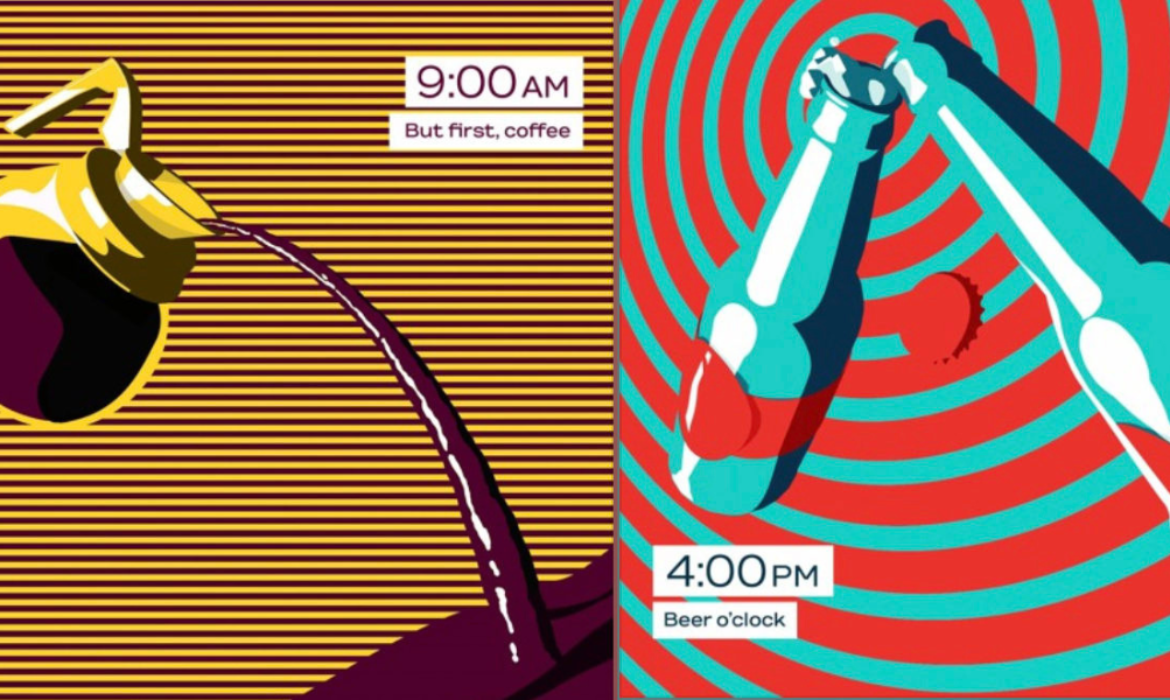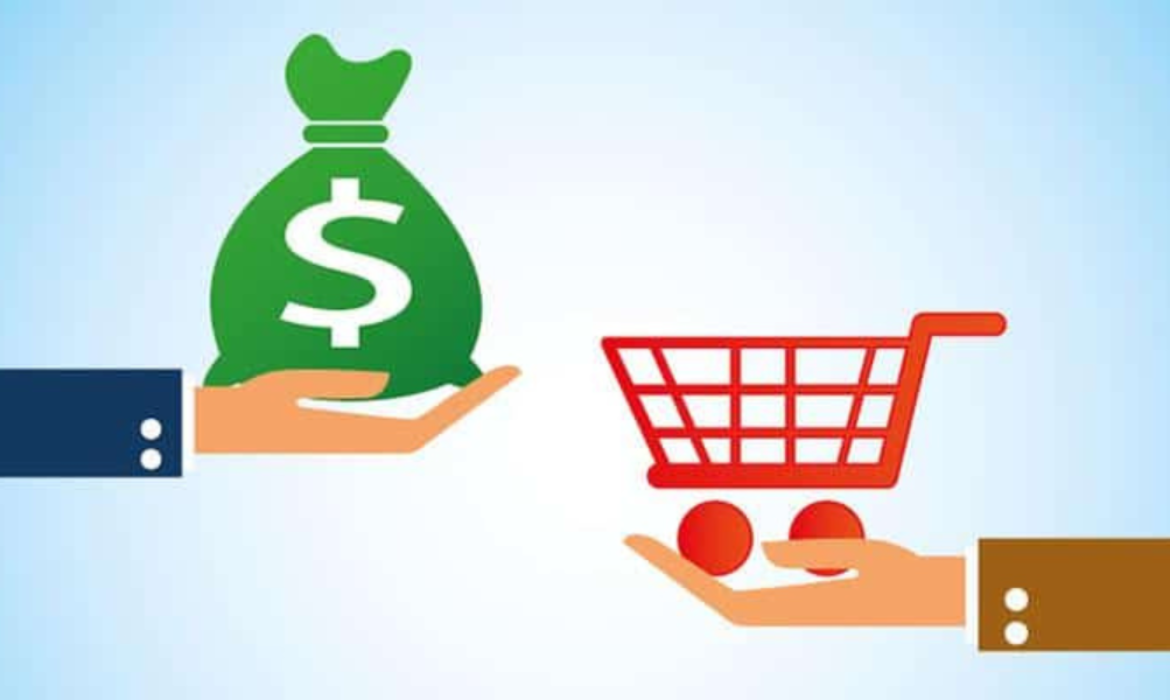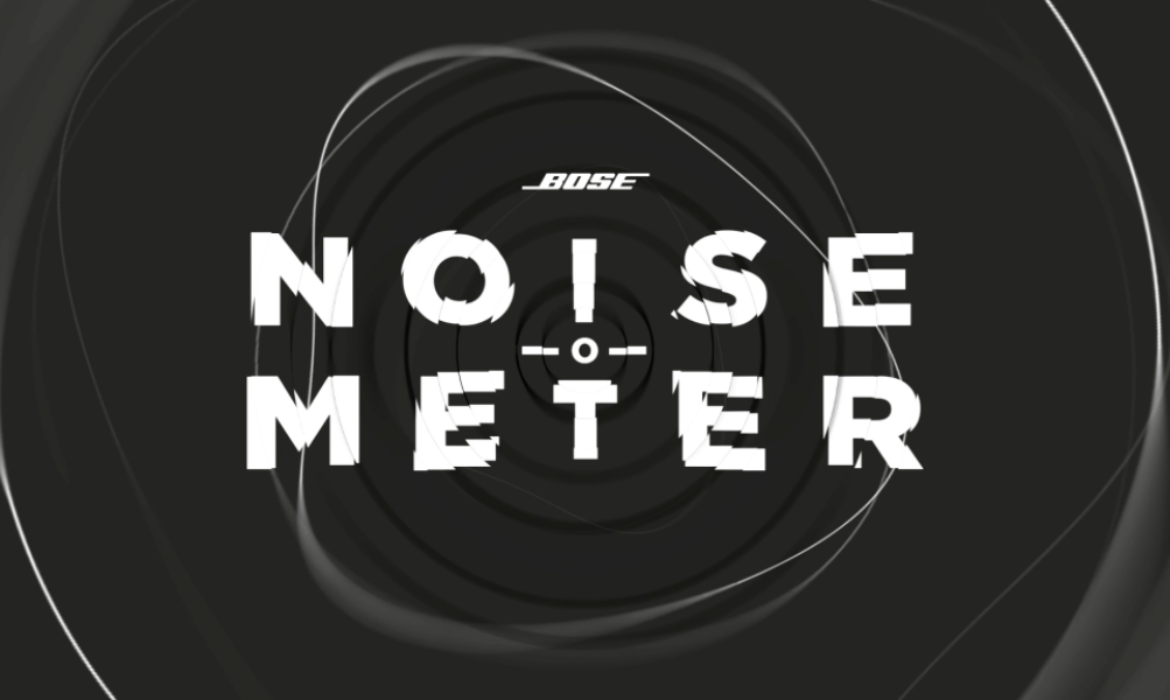5 Programmatic Advertising Case Studies That Yielded Exponential Results
Advertising has come a long way from the early ’70s and with technological shifts, there are incredible options to reach the target customers effectively. We have witnessed the rise of programmatic advertising with the advancement in the digital world.
For the uninitiated, programmatic advertising can be described as automatic buying and optimizing digital campaigns through real-time auctions, where ads are bought at the same time when a visitor loads the website instead of buying directly from the publishers without human interference.
Programmatic advertising is becoming a star strategy and businesses spend almost $60 billion every year. It is forecasted by 2021, 88% of all digital display ad spending will flow via automation.

Image Credit: eMarketer
Explore these five programmatic ad case studies to comprehend how brands are building compelling and successful campaigns.
1. BoxFresh
Challenge:
The men’s footwear brand had lost ground to sports brands like Nike and Adidas over the last couple of years because of its reliance on brick and mortar stores over online sales. The brand aimed to re-establish its brand in the UK and German markets, establish a connection to drive loyalty and repeat business with its target customers.
It concentrated on creating branded casual men’s footwear but reached a point where one in four consumers preferred Boxfresh for their purchase.
Solution:
The brand focused on video-led campaigns advocating their brand ethos- simplicity, value for money, nonconformity and authenticity which are in alignment with target consumers’ own values. Ads on Facebook were segmented based on demographics and interests as well as through first-party based lookalike audiences build. Video campaigns provided tailored messages to the audience’s stage in the buying cycle.
With the newly launched e-commerce website, the brand initially did not retarget cart abandoners and purchasers but model and optimize lookalike audiences prospecting campaigns.
Result:
With a programmatic display campaign, the brand soared above Google benchmarks disrupting the competitive market. The assurance that the brand is connected with the audience own values, display adverts had a click-through rate (CTR) 233%higher than Google’s benchmarks in the UK and 800%higher in Germany. 85% of the users who visited the site through prospecting activities are new users.
The digital agency Europe regional head added,
“The storytelling technique has had incredibly positive effects on the creative performance, which has resulted in great return on spend for Boxfresh. However, it’s important to remember that display is not the final touchpoint in the purchasing journey. Using Cadence, Rakuten Marketing’s data insights and attribution platform, revealed conversion rates for SEO and PPC grew by 169% and 50% in the UK when display campaigns ran alongside other channels. Likewise, the average order value increased by 20%.”
2. ASUS
Challenge:
ASUS has barely 0.3% market share in the Indian Smartphone market. 34% of sales are online and have more than 35+ handsets. With a low market share, it is important to revive the brand and plan a programmatic campaign to attract customers at the buying stage and create brand awareness.
Solution:
The brand integrated real-time data to send feedback on the effectiveness of each audience combination to web ASUS with their OCMPID.
When a user likes something, he adds to the cart. This shows that the user has a higher chance of buying it. On the other hand, there is a chance that he could accept another better deal for a more fitting product. Therefore, the best way was to target the audience through ads based on the cart.
The brand divided the audience into various segments based on – price range, featured buying habits and buying characteristics of the user on Flipkart.
These ads were programmed to reach the consumer on a real-time basis and here it is – when a user adds an ASUS phone in the cart, the brand was informed of the effectiveness of the creative audience combination.
For instance, if a user adds Xiaomi with 3500 mAh battery, ASUS would target them with ads that had 5000 mAh batteries at an even better price.
Results:
Due to a real-time programmatic approach, ASUS met its target to sell more than 1 million units leading to targeting efficiency went up by 3 times. In less than a year, the ASUS market share rose from 0.3 to 3%, a 10x growth.
3. The Economist:
Challenge:
To increase the subscriber base and grab the reader’s attention who are reluctant to try the Economist. Using creative programmatic display, the goal is to reach 650,000 new prospects and stimulate a change in perception.
Solution:
The campaign utilized Economist content and headlines that contained humor, wit, and sparked curiosity. The publication analyzed the extensive audience data which included information on how subscribers responded to the publication’s web and mobile app. Using this data, the Economist determined what content attracted and when. The idea was to link Economist content to the stories ‘the reluctant readers’ were presently reading.
The advertising creative was built in real-time. It matched viewers’ profile and page context to the Economist’s feed before serving an ad to the right people with the right context. For instance, someone could see a featured ad that linked an Economist’s story on US cops using firearms to the story of a police shooting in the Guardian.

Image Credit: Banner flow
Results:
On a £1.2 budget,
- 3.6 million taking actions
- 650,000 new prospects
- ROI of 10.1
The Economists followed up this display campaign with another focus especially on millennials and social networks. It won the 2016 Gold Best use of Programmatic award.
4.Missing People
Challenge:
British charity ‘Missing People’ is an ideal example of how to maximize a small programmatic budget. The charity needs to rescue all the missing children across the UK. With the use of programmatic OOH advertising, it intends to increase reach and impact.

Image Credit: Banner flow
Solution:
Programmatic OOH will help the charity to target those who might miss or disregard print appeal. It also helped to understand that people respond to messages relevant to their area in which they live. And through programmatic it could make a more targeted and location-based appeal.
The move from print to digital was crucial for the charity as it helped to save lives and allowed ads to be adept, creative changing once a child was found.
Result:
Ross Miller, director of fundraising and communication said, “the use of e programmatic use of out-of-home increased the response rate from 50% to 70%.”
5. O2
Challenge:
In 2016, O2 intended to make its “tariff refresh” TV ad more engaging and attractive for a mobile audience. It also wanted to repurpose its TV ads and make them interesting for mobile users.
Solution:
O2 created a system whereby it could take data about mobile usage-device, location, and others to offer personalized messages and video ads based on the user’s profiles.
More than 1000 versions of personalized video ads were made that integrated real-time with the user’s device and location.
Coinciding with the company’s sponsorship of the Rugby World Cup, it launched a website for the users to create rugby-inspired avatars. Using data from the website, O2 launched a campaign targeting those who accessed the website, giving them a personalized video ad and addressed them by their first name and invited to visit the avatar site. It also included a personalized call-to-action button to know whether they have already created the avatar or abandoned the process before finishing.
Result:
Personalized ads had a 128 percent click-through rate and an 11 percent increase in engagement.
Wrapping up
So, are you ready to use programmatic advertising? Well, programmatic adverts have immense potential for all kinds of business in any verticals. Simple but brilliant creative programmatic campaigns can be created to reach the right audience.
Lotame Introduces Cookie Free Data Technology For Publishers and Marketers
Lotame, the world’s leading unstacked data solutions company is looking to help publishers, marketers, media, and agencies to leverage their first-, second-, and third-party data to create and analyze audience segments with a new suite of data enrichment products called ‘Lotame Panorama’.
The suite will help users find customers, increase engagement and growth revenue across the cookie challenged web browsers like Safari, Chrome and Firefox, mobile devices, and OTT environments.
Jason Downie, chief revenue officer, Lotame, said,
“First-party data is a valuable asset, but unfortunately it doesn’t provide the scale marketers need. Bridging together customers’ online and offline lives has been a persistent industry dilemma that was made even more complicated with recent browser changes. To solve for this, we developed Panorama which enables a fuller view of activity that is actionable across a connected ecosystem, even in cookie-challenged or first-party-cookie-only environments.”
Unwrapping data enrichment services
Panorama offers two solutions, one for marketers and agencies, the other for publishers and media companies. Lotame has unveiled three data enrichment services powered by Cartographer, Lotame’s ID graph technology.
- Panorama Insights: It offers a varied set of curated data tools and analysis for better storytelling, prospecting, segmentation, and modeling without cookies needed. It connects users’ first-party data to second and third-party data across the web, mobile, and OTT devices from 250+ online and offline data providers.
- Panorama Buyer: It ensures that media buyers connect customers’ attributes across first-, second- and third-party data to create an addressable audience in the cookie-challenged environment.
- Panorama Seller: This allows publishers to monetize their inventory across the web, mobile, and OTT through direct or programmatic advertising. It also enables publishers to set exact CPM’s in cookie challenged environments.
Also Read: Prebid Server Aims To Ease Header Bidding For Programmatic Advertisers
Panorama launches as publishers and others that rely on extensive data sets may have to struggle to find the scale they need. Lotame has appointed Ruby Brenden as head of data products to drive Panorama Insights forward. Brendan said,
“I have spent the last decade helping innovative marketing companies launch products. I am excited to launch Panorama, a solution that is exactly what the industry needs as third-party cookies start fading out. Insights will give marketers and agencies a single, trusted place to uncover relevant data stories and build smarter, addressable audiences, which means better advertising for consumers.”
Customers Signing for new Lotame Panorama products
Companies like Procter & Gamble and IPG’s Cadreon have already signed up for the new Lotame Panorama products.
Clients agree and testify,
Paras Mehta, Business Head – India, at Cadreon said,
“Understanding customer attributes and behaviors is key to our data-driven strategy when working with advertisers. Data enrichment using high-quality second and third-party data like Lotame’s enables us to draw insights we wouldn’t have access to with first-party data alone. We look forward to leveraging more of Lotame’s data solutions to deliver the exceptional service and results Cadreon is known for.”
Tim Hung, marketing director and lead of media, P&G Hong Kong & Taiwan said,
“Improving the lives of consumers around the world isn’t just our mission, but our daily practice..This requires getting to know those customers through the use of high-quality second and third-party data vetted and verified by Lotame. As cookie blocking becomes more prevalent, data enrichment solutions like Panorama will become even more important for global brands like P&G to understand customers and engage with them in meaningful and respectful ways everywhere they are.”
Partners at launch include Domo amongst others. Jeff Skousen, GM, North American Corp/Ent Sales, at Domo said “We’re excited to partner with Lotame to power Panorama Insights.” He further added,
“By dynamically integrating data and delivering live visualizations, Lotame is providing brands bespoke audience real-time insights in a digestible, actionable format to improve analysis, prospecting, segmentation, and data modeling.”
Spotify Adds $1.7B To Market Cap In 23 Min Post A Deal With Joe Rogan, World’s Leading Podcaster.
The streaming giant Spotify gave 100 million reasons to Joe Rogan to make a move. Though the details of the deals are not disclosed, The Wall Street Journal reported that Spotify is entering in an exclusive licensing deal with Joe Rogan, owner of the world’s leading podcast worth more than $100 million, a move directly aimed at podcast market leader Apple.
Spotify stock shot up on the announcement of the deal and the founder Daniel Ek is now worth $2.8 billion.

Image Credit: Twitter
Why it matters
This is a landmark move for the medium. According to Neilsen, most Americans subscribe to only one audio subscription service but this trend can certainly change if more podcasts prefer to offer exclusively on certain platforms.
- “The Joe Rogan Experience” features long talks between Rogan and celebrities, subject area experts, comedians, and more. It is the second most popular podcast on Apple’s platform.
- Launched in 2009, the podcast was labelled independent and video versions are streamed on Rogan’s YouTube channel which has a loyal fanbase of more than 8.4 million subscribers and witnessed more than 100 million streams in March alone.
- According to MIDiA Research, the difference between Spotify and Apple as the leading podcast platform is so small that it can be considered within margin error.
Details:
The host Joe Rogan announced that the podcast will be available globally on Spotify starting September 1 and will become exclusive by end of the year.
What did he say:
“It will remain FREE, and it will be the exact same show. It’s just a licensing deal, so Spotify won’t have any creative control over the show. They want me to just continue doing it the way I’m doing it right now … I’m excited to have the support of the largest audio platform in the world and I hope you folks are there when we make the switch!” -Rogan on Instagram
- Spotify plans to incorporate video elements of the show that will be available as in-app vodcasts.
- Spotify will start selling ads in September through a partnership with PMM who is representing Rogan’s ad inventory over time.
- The popular comedy talk series will be available for free to all Spotify users like all podcasts on Spotify.

Image Credit: Axios
The bigger picture
Inking exclusive deals with leading podcast players is the latest strategy to woo more listeners. This could compel users to subscribe to multiple audio streaming services to access all favourite content.
- Spotify paid $196 million for Bill Simmons owned sports media company ‘The Ringer’ in February,
- Apple plans to fund and make podcasts for its own platform to promote its TV shows reported by Bloomberg earlier this year.
- Luminary expanded its services globally, bringing many exclusive podcasts to new regions.
Yes, this marks a significant moment for Spotify as it has invested over $500 million on acquiring podcast companies in the past one and a half years and has over one million podcasts on its platform. It also debuted ‘Streaming Ad Insertion’ which provides marketers access to insert host-read ads.
TikTok Appoints Former Disney Chairman As New CEO To Capture New Markets.
- Disney veteran Kevin Mayers who oversaw the launches of Disney+ and ESPN+ is leaving the company after 27 years to become the new CEO of TikTok.
- Mayer will take the lead on ByteDance’s music, gaming, and emerging business along with heading TikTok.
- Mayer will start on June 1 and report directly to Bytedance CEO Yiming Zhang.
- TikTok had an immense impact on the music industry and grabbing eyeballs of gaming and esports companies.
TikTok appoints Kevin Mayer as the new CEO after being poached from Disney. Kevin Mayer who was passed over for the Disney CEO role is taking a jump from the entertainment industry’s most esteemed names to one of its most dynamic new arrival.
TikTok’s new CEO plans to explore business opportunities in music and gaming as the company looks to capitalize on a recent increase in app downloads. Mayer, head of The Walt Disney Company’s direct-to-consumer and international business said in a statement,
“I’m thrilled to have the opportunity to join the amazing team at ByteDance. Like everyone else, I’ve been impressed watching the company build something incredibly rare in TikTok – a creative, positive online global community – and I’m excited to help lead the next phase of ByteDance’s journey as the company continues to expand its breadth of products across every region of the world.”
Advertisers and brands taking advantage of music trends
TikTok is a significant player in the music industry for discovering new artists and making songs to hit status. The platform contributed to the grand success of Lil Nas X’s record-breaking “Old Town Road” and more recently with chart-toppers like Doja Cat’s “Say So” and Megan thee Stallion’s “Savage,” which are all featured in the TikTok videos.
Advertisers have found new ways to use TikTok music and dance trends to their advantage in order to drive brand awareness among the Gen Z audience. Brands like e.l.f. Cosmetics and Warner Bros. have used original music and dance challenges to attract the audience and generate billions of views and user engagement on the app. As quoted by Business Insider, Evan Horowitz, CEO of the creative agency Movers+Shakers said,
“I think the nature of TikTok as a platform is that it’s one. It’s only natural that brands that create really good music.that the community on TikTok really resonate with, that music can start to trend and be successful outside of the platform.”
Gaming and esports companies jumping onto the bandwagon
Video games companies and esports brands have shown keen interest in the TikTok app as it continues to be popular among Gen Z users of the app.
Many esports brands like FaZe Clan, Team SoloMid (TSM), and 100 Thieves have officially created verified accounts whereas video game content is slowly taking up TikTok’s content recommendation landing page (ForYou). It’s too early for gaming creators on the platform even though esports companies are slowly and carefully exploring TikTok in recent months. Jason Wilhelm, CEO of TalentX Gaming told Business Insider,
“For TikTok, they haven’t really found what is the best way forward for gaming yet. You need a lot of requirements in order to stream video games. TikTok obviously is not set up for that right now, but that is something that we’re going to be figuring out.”
TikTok has seen a significant surge in users since the pandemic hit U.S – 315 million downloads across the iOS and android app stores in 2020 Q1, that’s the most download for one app in a single quarter as per mobile data analysis group Sensor Tower.
Also read: YouTube Shorts: Will it be Able to Capture Tik Tok’s Audience?
Prebid Server Aims To Ease Header Bidding For Programmatic Advertisers
Prebid Server is an open-source server-to-server header bidding solution. The prebid server gives publishers access to the largest header bidding marketplace. It’s free to use, transparent, and integrated with more than 150- demand partners and many managed solution partners. Michael Richardson, Senior Director, Product Line Management, AppNexus said,
It is an infrastructure of a streamlined adtech ecosystem that maximizes value for everyone, not just Google.
According to Prebid.org, a prebid server improves your page’s performance by running the header bidding auction on a server. This will improve your page’s load time, which should improve your users’ experience.
In recent years, it has grown alongside the programmatic market and extended support for native, video, apps, and connected TV. Sellers are used to the benefits of the unified auction offered by Prebid by adopting multiple wrappers across multiple formats. Now there are calls for simplicity from buy-side as well as platform-supported, server-side Prebid solutions to reduce the burden on publishers.
Publishers dealing with multiplying wrapper formats
Prebid’s biggest asset ‘open source’ is a limitation for some sellers. The open-source nature of Prebid leads to transparency, which means publishers should take the matter in their own hands or find an expert technology partner.
Publishers lack the expertise to manage Prebid and its open values and eventually, this has led some of them to embrace proprietary wrappers. But proprietary wrappers have their drawbacks – the disparity in counting methodology and payment can result in buyers and sellers struggling to transact. Also, some wrappers exclude certain types of demand from participating – in cases where internal teams haven’t updated or built third-party adapters to integrate proprietary wrappers into the auction.
Many publishers have been running Prebid, Amazon TAM, and Google Open Bidding simultaneously. As a result, DSPs are receiving impressions once from each SSP, multiplied by the wrappers. The growing dissatisfaction in the DSP community over duplication requests and declining to participate in Open Bidding led to initiating mandates that the SSP community and publishers pick a single wrapper format.
In the upcoming period, it will be clear how the industry adapts but many publishers are expected to choose Prebid as a primary wrapper.
Also Read: Advertisers Look For Greater Transparency In Programmatic Ad Buying
Prebid server for Mobiles and CTV, Easy-to-use formats
A narrative was out in the early evolution of header bidding that “server-to-server was the future.” By running of an auction on the server-side than the user’s device- logic is- server-side heading creates a unified auction in a new environment, reduces latency, and improves user experience.
This approach has three issues – publishers couldn’t run easily as client-side, low participation of bidders, and required an additional user-match layer, reducing revenue.
Prebid Server is the solution to all these problems. Its 60 bidding partners show demand is no more a concern. Prebid sever will not need an additional user-match layer longer as cookies decommission, Prebid Server’s advantage in user identity only grows. It also allows header bidding in mobile applications and connected TV.
Many leading providers are investing in solutions to combine the Prebid server with their own technology making it easier for sellers to run server-side header bidding across all formats and retaining the benefits of an open-source wrapper.
Future of Prebid Server
It is exciting to witness the years of investment in Prebid paying off and the Prebid.org community growing. Publishers and Adtech partners working on the web inventory have adopted header bidding as an important technology in their monetization stack.
Looking forward to seeing how TV programmers and distributors leverage Prebid to optimize their business. It will be interesting to see how different wrappers start using the bid data, and apply data and machine algorithms to further optimize for higher revenues.
Publishers looking to contribute to Prebid and learn more about it, join Prebid.org as a member company.
Financial Report Card Of The Global Giants And Industries In COVID-19
Media companies are facing distress owing to the pandemic crisis, particularly those relying on advertising revenue. The current situation is precarious that compelled companies to roll out furloughs, pay cuts, or layoffs.
Even though publishers are recording high traffic, there is a mismatch in demand and supply in the ad market. Subscriptions are a silver lining for publishers but again sustainability is in question. Many businesses are impacted due to cancelled live events like sports that would bring a vast sum of revenue. Newsstands sales have also witnessed a fall.
Keeping the above factors in mind, below is the analysis of leading media companies’ financial and quarterly reports and their progress in this crisis.
CONGLOMERATES
Bertelsmann: Ad funded businesses were affected while music, services, and education business performed well.
The German media conglomerate Bertelsmann’s revenue declined by 2.7%. The advertising-funded business Q 1 was “highly affected” by the pandemic. Within the digital business RTL Group specifically, the revenue was down 3.4 % owing to the cancellation of ad bookings at the start of March or postponement of productions.
Music business BMG, its Arvato services business and its education business performed well. Subscription to the online streaming services was up 34% Y-o-Y.
Comcast/NBCUniversal: Broadband business upticks whereas rolling out Peacock streaming service.
Comcast is a large company with its broadband business marks an uptick with signups. and revenues up by8.8%. On the other hand, its theme park, TV and film production business is on hold.
NBCUniversal and newly acquired Sky TV cannot broadcast live sports. The company expects the advertising business to be down significantly in Q2
NBCUniversal Q1 revenue was down 7% and it rolled out ad-supported Peacock streaming service to Comcast customers in April.
Disney: Theme Parks and Sports Broadcast Shut, Disney+ subscribers up.
The crisis led to shutting down of theme parks, and productions and theatre movie releases were put to hold. Ad revenue at its TV business was affected as ESPN couldn’t air any live sports.
However, it stepped up the launch of ad-free streaming service in European countries. Disney+ had 33.5 million subscribers by the end of Q1 and an average of $5.63 in monthly revenue per paid user. Disneyland Shanghai did reopen, at 30% capacity on May 11.
WarnerMedia (owned by AT&T): Q1 Revenues severely hit.
Recently, folded its Xandr advanced advertising unit into a bigger WarnerMedia business.
Q1 revenues of WarnerMedia was down 12% on the year-ago quarter to $7.4 billion due to lower ad revenues in March on sports cancellations. Movie productions are also on hold.
PUBLISHERS
News Corp: Circulation and Subscription revenue grows, Ad revenue takes a hit.
Rupert Murdoch’s News Corp includes various leading and established brands like The Wall Street Journal, The Sun, and many more in U.S, U.K, and Australia.
Overall revenue declined 7.8% to $2.27 billion in Q1 due to weak ad business, low ad revenues, and negative currency movements. April ad revenue for Dow Jones declined 20% from the prior year whereas for News Corp Australia and News UK fell by more than 45% which includes negative currency impact.
The Wall Street Journal reported circulation and subscription revenue growth by 1% reaching a record subscriber base of 3 million overall, of which 2.2 million are digital-only.
The New York Times: Focus on Subscription Revenue to thrive in the post coronavirus world.
The NYT is leading more emphasis on subscription revenues to reduce its dependency on ad revenue to be in a better position and thrive post coronavirus world.
NYT recorded the highest quarterly increase in new digital-only subscriptions-up 587,000 in Q1 -leading to a 5.4% increase in subscription revenue to $285.4 million. Ad revenue fell by 15% and likely to fall further in Q2 somewhere between 50% and 55%.
“Other revenues” segment is estimated to fall around 10% as licensing revenue from Facebook News is expected to be “more than offset”- by lower revenue from its live events and its TV series.
TV AND CABLE
Discovery: Their channels are new sports.
Discovery CEO David Zaslav on the Q1 earnings call said, “Our channels are the new sports — the numbers are huge” around its lifestyle channels like HGTV, Food Network, and DIY. The engagement with the characters and talent is enormous. Discovery is also saving money productions through the pandemic as the film shows from home.
Total revenue declined from 1£ in the first quarter to $2.68 billion and expects advertising revenue to fall significantly in 2020. Many sports events are postponed and 90% of the sports deals have force majeure provisions or provisions to not pay for the content that is not received.
Fox: Fox News gains the largest audience.
Revenue for the three months to March 31 rose 25% supported by the forecast of Super Bowl in February, an increase in political advertising, and growth in affiliate revenue. But in March entered coronavirus crisis leading to the postponement of sports events and suspensions of entertainment shows.
80% who signed up for Fox Nation streaming service from Fox news continued to become paying subscribers and advertisers from sectors like technology and communications looked for the transition from sports buy to news buy. Ad revenue within local TV stations to be down 50% from last year.
ViacomCBS: Streaming revenue continues to grow and more on its way441.2 b
Revenue for Q1 fell 6% to $6.67 billion of which advertising revenue marked a 19% drop though a comparison to last year would be unfair when it aired Super bowl and basketball tournament.
Streaming continues to grow- domestic and digital revenue up by 51% to $471 million and had 13.5 million streaming subscribers. It intends to build “a broad pay streaming product in multiple markets” over the next 12 months. It announced a distribution deal with YouTube TV, which will carry 14 ViacomCBS channels
DIGITAL GIANTS
Alphabet or Google: Faring well in this crisis and a better situation.
Q1 revenue stood at $41.2 billion, up 13% Y-o-Y basis(including Google cloud revenue and the ‘other bets’ segment).
According to CFO Ruth Porat, Youtube’s March revenue “decelerated to a year-on-year growth rate in the high single digits” and Google Network March revenue declined “in the low double digits.”
Google Cuts Marketing Budgets by 50%, Freezes Hiring, and launched a “Journalism Emergency Relief Fund”.
Baidu: A closer watch on the signs of recovery in the upcoming result.
Chinese advertising giant Baidu was the first to report the coronavirus crisis set to affect media companies and expect a revenue drop of between 5% and 13% due to advertiser pullback.
In April, it suspended updating content on certain newsfeed channels within its app due to government directives which may impact its marketing services revenue. On May 18, Baidu will give the next quarterly update, and would be worth watching whether there is any recovery in the ad business.
Amazon: The advertising business grew as directly related to eCommerce sales
Amazon’s Q1 revenue soared as consumers quickly shifted to shopping online amidst the coronavirus crisis. Conversely, revenue rose 26%, and profit dropped 29% compared to last year’s quarter. The cost grew to finish the surge in orders
In the financial statement, the ‘other’ category is advertising business- revenue grew by 40% to $3.9 billion in Q1. The growth is consistent with a little downward pressure in March but no major impact as its directly related to eCommerce sales. ‘
Facebook: Post Strong Earnings, Exceeds Projections
Facebook ad revenue grew by 17% Y-o-Y to $17.4 billion despite the instability in the digital ad market due to COVID-19.
Facebook saw strength in the advertiser’s vertical- gaming, technology, and e-commerce whereas travel and automotive were the weakest verticals in the first three weeks of March.
Facebook had Pledged $2M Grant Funding To Support Publishers Financially.
Snapchat: Users and Revenue Increases, ad spend declines
Snapchat reported in its Q1 2020 earnings – strong gains in both users and revenues but a dip in advertiser spend despite the growing concerns about the coronavirus pandemic. the company reported a 44 percent (Y-o-Y) increase in its first-quarter revenue to $462 million. Snap benefited as people used animated lenses to keep in touch with loved ones in this lockdown. Snapchat’s daily active user (DAV) base reached 229 million.
Direct-response advertising accounts for more than half of the company’s revenue and clients in sectors like gaming, e-commerce, and consumer packaged goods continue to spend even during the crisis.
Twitter: Work in progress over AdTech concerns
Twitter’s user growth jumped in March as people rushed to check the latest news updates related to the coronavirus. Despite a 9% growth in daily users, revenue was up only 2.6% to $807.6 million and reported a loss of 8.4 million in Q1 results.
In comparison to its competitors, Twitter doesn’t have a direct-response advertising business. Therefore, the company is improving its mobile application promotion products and rebuilding its ad server which is expected to be up and running by Q2.
Mobile Gaming Industry Bank On People Locked Inside Homes Due To COVID-19.
- Even as stock markets plummet two sectors actually doing well are streaming services and online gaming.
- The mobile-gaming category is finding the brightest spot even as other businesses face the heat of countrywide lockdown owing to coronavirus outbreak.
- The mobile gaming category is more than a $60 billion-a-year market and seeing a massive surge in ad revenue.
Even as businesses across sectors face the heat of lockdown owing to coronavirus pandemic, online gaming has witnessed a welcome spike. There are more than 2.6 billion gamers, each spending over eight hours per week playing worldwide.
Why it matters
As hanging out gets difficult, gamers are active members of their communities, socializing with each other and exploring the virtual world – A world free of coronavirus. Recently, Netflix CEO admitted that when it comes to screen time, video games and not streaming services is their biggest competitor. For instance, Netflix has 167 million members, whereas one of Epic’s games, Fortnite, has over 200 million users.
Driving the news
Video games used to be played on big screens through expensive consoles but now when we think of video games, we will think of our mobile phones instead. Mobile gaming is emerging as a dominant digital ad platform and marketers are planning to leverage it as the world goes online from home.
- The months of quarantine and pandemic has changed brand engagement with the consumers. People are streaming entertainment, watching the news, and engaging with friends and family on playing games especially mobile games. Therefore, marketers are reimagining their brands and agencies are restructuring to communicate effectively on behalf of the brand and seize every opportunity on the way.
Yes, the trends are changing. The future of addressable video lives is now in the palm of your hands. The app is your TV and mobile gaming is primetime.
By the numbers: AdColony new survey in March 2020 showed mobile gaming jumping more than 24 percent as the mobile audience grew more reliant on smartphones for entertainment while sheltering in homes.
- Increase in mobile game downloads by 60 percent compared to the 30-days before the survey month March.
- The increase in casual mobile games is 28 percent whereas board game downloads grew 16 percent and there were major acquisitions too.
- Word game download grew 8 percent with a six percent lift in the already high number of sessions.
- Hardcore gamer categories like action, adventure, and role-playing have started to move upward.
61 percent of marketers polled said the coronavirus situation is leading to changes in content that they are comfortable having their ads placed adjacent to.
The big picture
Mobile games have more reach than traditional T.V. Additionally, they are backed by the best parts of digital buys – addressability, creativity, analytics, and attribution. This allows advertisers an opportunity to rethink how to leverage sight, sound, and motion to engage customers combined with the surge in users.
With In-app gaming, the brand is safe and accountable. For viewability, fraud, and accuracy, measurement vendors have built programmatic solutions, and data is defined and virtually universally accessible. In these uncertain times, the app has a lot of scope with innovative opportunities for smart marketers to go big on consumers.
Wunderman Thompson Brings Agency Office Buzz To Employee’s Homes.
COVID-19 has compelled the world into self-isolation which means working from home indefinitely- which is challenging for highly collaborative and creative industries like marketing and advertising. Technology bridges the gap of connectivity but nothing can replace the buzz that comes from working in a busy agency. Therefore, Wunderman Thompson Canada is keeping you company with the ambient noise of an agency office from the pre-pandemic times.
The 8-hour soundtrack spans from 9 a.m coffee to 4 p.m happy hours, every elevator ping, chatter, and email notifications of a typical office day, recorded by the agency’s remote employees. The audio is called ‘Isolation Station’ on SoundCloud and is hoping that this tracklist might recreate the familiar and nostalgic buzz which will help employees feeling sick of working from home in the pandemic, get the feel of a more productive setting. Even the track names remind of office life with titles such as “But first, coffee” and “Beer o’clock”.
Wunderman Thompson Canada executive creative director Ari Elkouby said that they tapped real Wunderman Thompson Canada employees to record themselves having conversations with colleagues over Microsoft Teams and on their mobile devices to make the soundtrack truly authentic.
“We created a story map over the course of eight hours and got employees to contribute to different parts of the day. That dialogue was mixed over an audio bed of office ambient sounds to complete the track.”
Ari Elkouby also mentioned that Isolation can be scary and less ideal for many, however, this is to show the team and industry that we are together and provides much-needed comfort in a creative and fun way. Who knew that a conference room discussion meet can be so nostalgic?
This is similar to a campaign from the New York Public Library, in which the sounds of the bustling New York City were recreated.
This is also an interesting read: Noise-O-Meter By Bose Rewards Rising Noise Level With Discounts On Its Headphones.
Publishers Withdraw Ad Inventory From The Market To Protect Ad Prices
Generally, conventional wisdom says a publisher would sell more ad units at a lower price in a weak market. However, publishers are doing the opposite and pulling their inventory to take a short-term revenue hit and protect their inventory price from falling further. This will help their business in the long run by not falling into the trap of price cuts which would be difficult to win back.
Programmatic advertising market operates under an auction system, lower advertiser demand, and higher web traffic to publishers site has pushed programmatic ad CPM’s down by 10%-20%. Since buyers are now more loyal to price than brands, publishers are preventing prices to tank further to a point of devaluing their inventory over the long term. While some publishers are reducing their inventory in the open market to keep the prices from falling further, others are using ad slots to push internal subscriptions or eliminating ad slots from the pages. For instance, Buzzfeed is getting rid of display ads that receive lower viewability scores.
Unfortunately, the publishers are acting independently and not considering the impact on the broader market. They aim to protect their own inventory prices from falling low as they fear it will take a longer time to return to the previous levels especially if advertisers are buying at a bargain now and unwilling to pay more later when things are back to normal.
As quoted by Digiday, Andy Ellenthal, CEO of the ad sales reporting platform STAQ shares a similar opinion and said, When advertisers return to their normal spending amounts, “they’re going to absolutely remember that a publisher was 25 cents in April of 2020.”

Image Credit: Digi Day
As per the above STAQ graph, the average U.S. display ad CPM in the open auction has fallen from a high of $1.34 on March 1 to $0.91 on May 3.
Even though average CPM has bottomed out on April 8 at $0.83, Andy Ellenthal believes CPM’s will not experience a U-shaped recovery but more of an L-shaped recovery, a slow and steady upward trend. This means publishers whose CPM has fallen least will have to cover the shorter route to return to previous prices.
DigiDay interviewed a few publishing executives and one publishing executive said,
“I’ve got to manage my supply to keep it in balance with demand, and demand has fallen so fast that now we’re trying to get ahead of the game. How much supply can we take off the table to control the CPM without actually truly hurting our business more than it’s hurt now?”
A second publisher executive said that the removal of one ad unit across their sites is equivalent to more than 1 billion monthly impressions. It is a generous number but not significant enough to move the market. Media Math’s DSP sees more than 180 billion impressions each day.
On this Ethenall said,
“These publishers always have to strike a balance between fill and yield. Chances are they are not going to fill 100% of their ad slots right now. If you have a billion impressions that go unsold anyway, what’s the value of them if they’re only pulling down pricing for your better impressions?”
Many publishers have adjusted their floor price to a minimum level at which the inventory can be sold. However, the lower ad demand has made the publishers pull inventory and protect prices as inside programmatic advertising, everything revolves around “Price.”
One of the publishers used to increase floor price by 15% every two weeks since the beginning of Q1. However, in the second half of March, a significant number of impressions went unsold. The publisher could have reduced the price to sell his inventory but he didn’t and said, “in no way do I want to drop my floors to 25 cents because I don’t want crappy ads coming in.”
Lower the ad prices, the higher the chances of giving in to undesirable advertisers who can jeopardize the ability to attract genuine advertisers. Publishers use this opportunity of lower demand to seek out prospective advertisers, but they are wary that lower CPM can alleviate advertiser’s interest in doing programmatic direct or private marketplace deals.
Publishers are also looking at this opportunity to experiment repurposing of impressions that can boost their other businesses and become less reliant on advertisers. For instance, if a publisher can see that house ad proclaiming its subscription product can attract more subscribers and yield than those impressions to advertisers, they would monetize on house campaigns and not take revenue from programmatic advertising.
Noise-O-Meter By Bose Rewards Rising Noise Level With Discounts On Its Headphones.
Wunderman Thompson and Bose launches Noise-O-Meter to bring noise-cancelling savings to loud homes.
The new normal for millions of office goers is Working From Home (WFH) owing to COVID-19 pandemic. Many are able to maintain their productivity while working from the home offices but it may not be true for all. The volume indoors can be so high that the streets outside may sound calm and quiet.
To combat this cacophony, Bose is taking a singular approach and offering savings on its newest and innovative noise-cancelling headphones: The louder your home office, the larger your discount.
The new video ‘Noise-o-meter’ is developed by Wunderman Thompson, Dubai, and launched it in UAE. It measures ambient noise levels and instantaneously converts the decibels into discounts.
Bose Noise-Canceling Headphones 700 was launched in a new era of audio technology. Bose partnered with Wunderman Thompson Dubai, which engineered a unique algorithm for interpreting sound data. Thus, offering Bose fans a playful, enriching, and rewarding way to get their hands on these unrivalled headphones. The video ad is a blend of creativity and innovation.
Pablo Maldonado, Executive Creative Director at Wunderman Thompson Dubai, explains:
Unwelcome decibels are everywhere, from the whooshing hairdryer to that rattling washing machine and those boisterous neighbors. We wanted people to have some fun even as they save more and bring the calm inside. What makes Noise-O-Meter extra rewarding for us is the fact that it was dreamt up and brought to life from our home offices!


